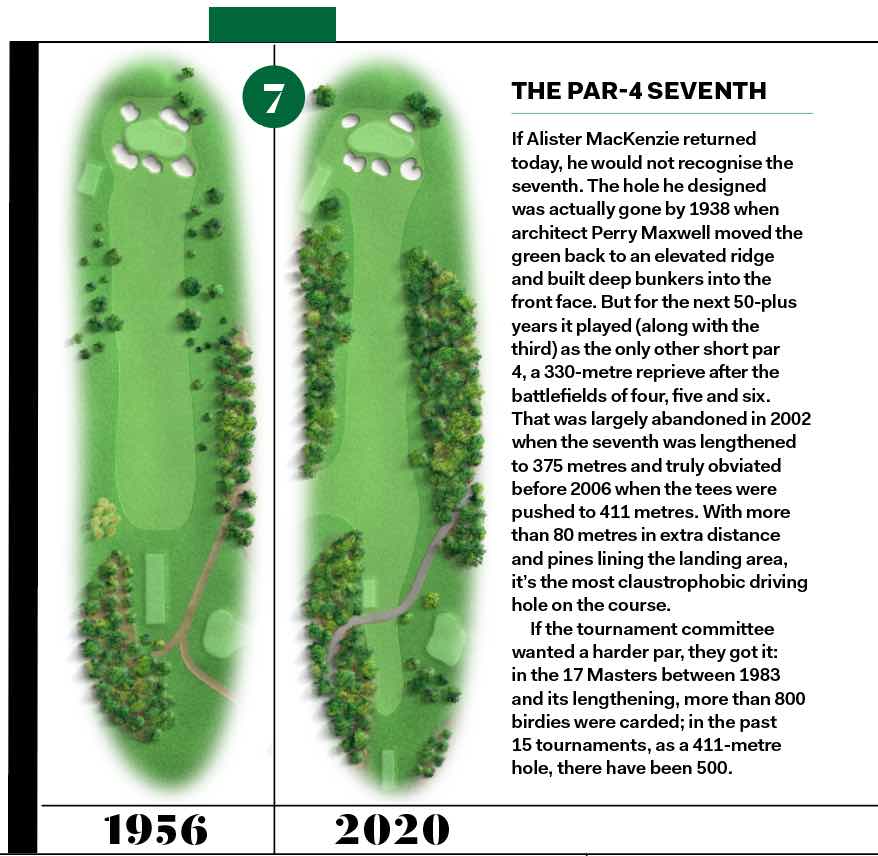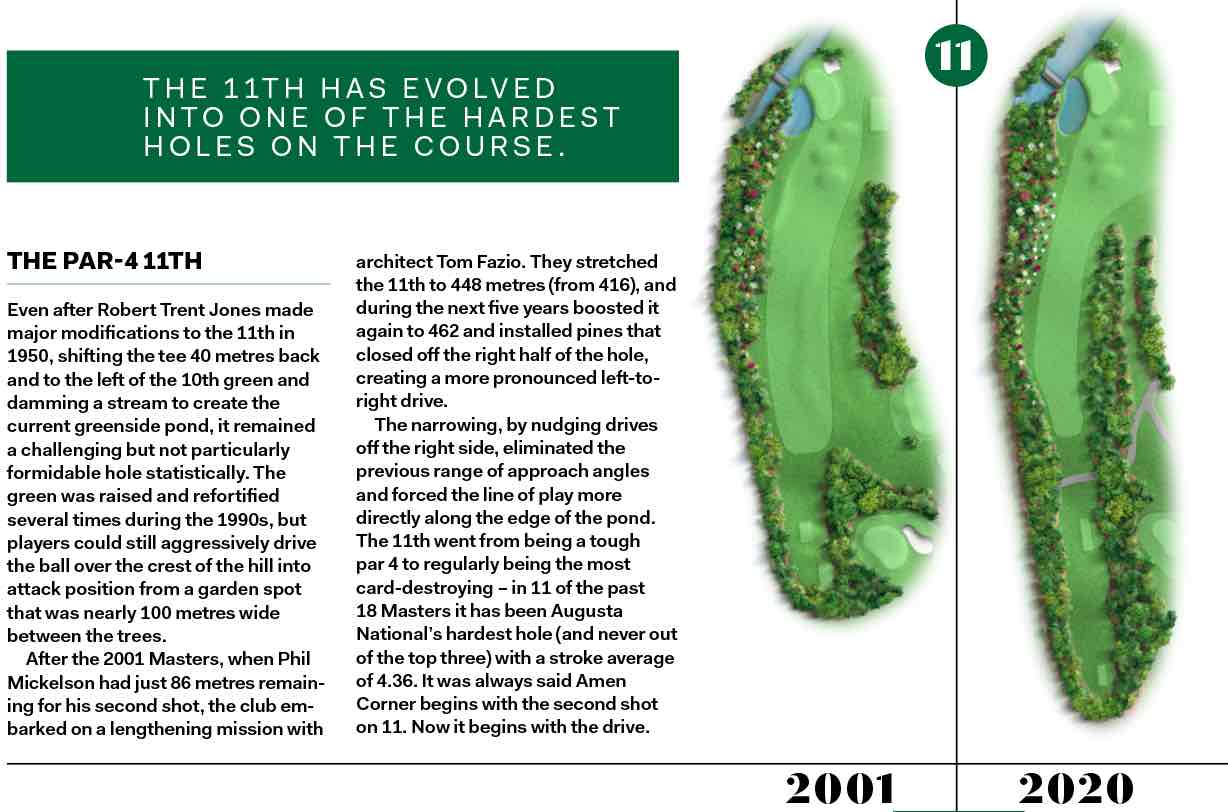When Augusta National purchased several hectares behind its 13th tee from neighbouring Augusta Country Club in 2017, there was little mystery as to why. The tantalising par 5, playing 466 metres (510 yards), has been relegated to a drive and short-iron approach and no longer puts Masters contestants in those heart-in-the-throat second-shot scenarios it was meant to. Extending the tee at the 13th, something projected to happen any year, is the logical way to re-establish the hole’s integrity.
Such a substantial alteration to one of golf’s most famous holes, potentially lengthening it as much as 70 metres, might seem like a drastic move. But drastic moves are in character with Augusta National’s heritage, and it would be just the latest impactful adaptation the club has made during the past 40 years – and particularly in the past 20 – to counter the increases in power, proficiency and distance in the professional game.
The most fundamental architectural modifications of the original Alister MacKenzie and Bobby Jones design were completed by the 1950s (including the relocation and reconstruction of greens, the simplification of bunker forms and the building of a new 16th hole).
Subsequent changes have focused on three objectives: preventing the course from being overwhelmed by modern tour pros and equipment; enhancing the live and televised spectator experience; and maximising improvements in agronomics and maintenance. To these ends, Augusta National has added nearly 500 metres to the course since 1999 (for a total of 6,385), planted trees to narrow fairways, reshaped mounds and hollows around greens and introduced a second cut of rough. The fact that these revisions haven’t produced drastic scoring fluctuations is probably proof that they have been effective – scoring averages per decade, beginning in the 1980s, are 73.97, 73.40, 73.89 and 73.22.
The revisions since 1999 also demonstrate a philosophical nimbleness: to preserve certain historical continuities, Augusta National has sacrificed others. The narrowing of select holes through tree planting places a premium on straight driving that is at odds with the shot-shaping that defined play at the Masters since the beginning. Much of the adventuresome spirit, exploited by players like Arnold Palmer and Seve Ballesteros, has been lost in making the course more durable against the modern game.
Historians love to illustrate – and lament – all the ways Augusta National has deviated from the design MacKenzie called “The World’s Wonder Inland Golf Course”. But the following changes enacted over the past several decades have had an equally profound effect on the course’s character and playability.



The conversion to bentgrass greens
One of the most critical alterations made in the past 40 years might not be noticeable to the eye. In 1980, the club converted its greens to Penncross bent, replacing the old strain of Bermuda (which was overseeded with rye) that was becoming impossible to make play fast. The intended effects became evident as players marvelled at the quickness of the greens, and only one winner the rest of the decade finished in double figures under par (Ben Crenshaw in 1984, at 11-under) compared to five of the previous six champions.
As the grass matured, the staff could achieve a new standard of speed and uniformity, to the point that the greens were sometimes too fast because of the severe contours. If conditions were hot and dry, the greens became rock hard, and it was not unusual for putts to coast entirely off the surfaces. If they were softened by rain, approach shots might spin backwards off the greens.
As a result, green surfaces with the most pronounced transitions, including four, six, eight, nine, 14 and 18, had to be rebuilt to reduce the slopes. The green contours continue to be massaged and updated with improved strains of bent, but the exacting Augusta greens we now know trace back to that first 1980 conversion.



